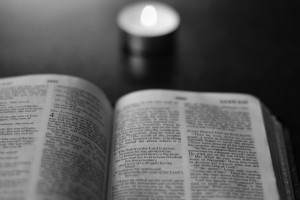 One of the ancient contemplative habits of the ancients is Lectio Divino, or Holy Reading.
One of the ancient contemplative habits of the ancients is Lectio Divino, or Holy Reading.
This is a way of engaging with the Bible and with God in an utterly different way to normal. In fact, it’s different from any other form of reading. The best and most helpful description I have come across is in “Contemplative Youth Ministry: Practising the Presence of Jesus with Young People” by Mark Yaconelli (see resources, below).
The starting point is to understand that there are many different ways to read. The way you read the milk bill is different from the newspaper, which is different again from a novel, which is different again from a love letter, and different again from revising from a text book before an exam. Holy Reading is a special form of reading, where the words themselves take second place to the meaning breathed through them by the Holy Spirit. But I’m getting ahead of myself!
The process is simple – you can take anything from 5 minutes to several hours, although I would recommended spending at least 15 minutes. The basic steps are thus:
- Find a quiet place where you won’t be disturbed
- Take a few minutes to settle yourself. I find that a bit of paper is useful for scribbling down random thoughts / things I need to do / shopping list stuff, that would otherwise nag at me.
- Choose a short (12-15 verses) passage from the Bible. The passage itself doesn’t matter, although it may be harder to work with a genealogy!
- Read it through once, ideally out loud, at a steady, unhurried place, to familiarise yourself with it.
- Read through it again, this time trying to identify a word or short phrase that grabs your attention in some way. This would be a word that seems to be in bold, or flashes at you, or seems particularly significant in some way.
- Put your bible down, and chew over this word in your head. Think about why it came to mind, and what it means. Think about why the translator chose that particular word. Ask God about the word, and what He might be trying to say to you. Is he encouraging you? Challenging you? If your mind starts to drift, just return back to this word as soon as you notice, and start thinking about again, perhaps it in an alternative way.
- When you’ve “sucked the word dry”, and considered it from every angle you can think of, and listened to God as much as you can, translate those thoughts into prayer. If God has encouraged you, thank Him. If challenged thank Him, and ask for help in facing this challenge. Tell Him what you think and feel about this word.
- Allow your prayers to drift away from the word, if you have other thoughts on your mind. Tell it all to Him. Pray yourself empty. Pour your heart out.
- Finish by resting in quiet contemplation. You’ve let it all out, now just rest in His arms.
This simple exercise is something I have come to greatly value. My experience is that this structure allows God to speak to me, and for me to live and breathe scripture. Why not try it now? Print out this page, and run a bath, or find a quiet room and do it.
I also would strongly encourage you to jot down the passage and word and particular thoughts in a journal, so you can return to this time in the future!
This exercise is particularly effective in a group setting, where you add a step (10) that involves each of group sharing the particular word they were prompted by, and what thoughts they had about it. When I ran a Youth Group, we used to set aside time for Holy Reading at our planning meetings, as a way to discern what was on God’s heart, and a common theme usually emerged that we used to help set our agenda for the coming term.
Resources
- Contemplative Youth Ministry: Practicing the Presence of Jesus with Young People
, Mark Yaconelli, SPCK Publishing 2006.
- Eat This Book: A Conversation in the Art of Spiritual Reading
, Eugene Peterson, Hodder & Stoughton 2008

